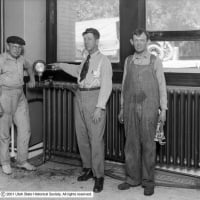Welcome! Here are the website rules, as well as some tips for using this forum.
Need to contact us? Visit https://heatinghelp.com/contact-us/.
Click here to Find a Contractor in your area.
If our community has helped you, please consider making a contribution to support this website. Thanks!
Type of boiler feed valve
Options

Timco
Member Posts: 3,040
Are you looking for a pressure reducing valve or a back flow preventer? PRV brings water pressure from city pressure to 10-15 psi, depending on what you set it for. A BFP prevents boiler water from contaminating your domestic water...
Tim
Tim
Just a guy running some pipes.
0
Comments
-
Boiler feed throttle Valve ?
Good Day Between our boiler feed pump and the boiler I believe we need a "throttle" valve to hold back our water from the boiler feed tank which is above the boiler water level.Someplace on here I have read{I can not find againe} that it should run about 10psi over boiler pressure[which is below 1 pound}.It would also act as a check valve to keep the boiler water from flowing backwards.What are they really called in Graingers or the like. Thank You Great Forum0 -
Sounds like
you are looking for a check valve? If I gather correctly, you are pumping directly into the boiler and the pumps draw from the feed tank as is the normal practice. From this I surmise that your tank would otherwise drain and siphon through the pump and flood the boiler. Do I have this correctly?
I have to wonder why you need a feed pump at all.
If the situation is a "must", then what you need to my mind is an automatic isolation valve, a motorized ball valve which will open and an end-switch will start the pump. But why you need a pump at all escapes me. Can you fill us in with more information?
The dictum that you run 10 psig above the boiler pressure is just to assure that you have sufficient pressure for pipe and fittings and still enough to make it into the boiler with room to spare.0 -
Thank for the fast respose. We hadn't thought of no pump ,just the valve. The tank bottom will be 30'' off the floor and water level in boiler is 32''. The tank is 60''tall and we were planning on running it 1/2 full . We can use the lo water switch to control the valve?0 -
More info Our condesate pump will pump the condesate into this new tank.It also would have a manual water feed into the tank with sight tube. The plans were to than use the boiler feed pump through the throtling{spring loaded check valve?}valve to feed the boiler. That valve was to keep the tank water from gravity flowing into the boiler and also act as a back check to keep the water in the boiler0 -
That was another scenario
pumping into the tank, that I gleaned from reading your first post. Then I went with what was to me the most likely scenario, pumping to the boiler... this is different
I am confused now. You say that you "are" pumping into the tank, but then you say that you "were" going to pump into the boiler? Which is the correct setup? Or is this what you are trying to decide?
So, it seems that the boiler feed could really be by gravity and the pump just corrects for elevation, in which case I would think that you would not need a pump at all (there has to be some "head" or pressure on the lowest water in the system).
Is this one-pipe or two-pipe steam? Can you post a photo or diagram?
Brad0 -
Thank for the reply; Instead of the boiler feed pump what electric valve would you use to control the flow of water into the boiler? We were planning on useing a 150 MD to control the boiler feed pump and could [would] use it to control the valve.0 -
Motorized
ball valve, a Neles-Jamesbury if you can get one. I like ball valves (full port) because they tend not to clog or collect debris as do globe and gate type valves. The 90-degree arc makes for simple actuation versus a sliding globe (vertical stroke with packing gland issues) or a rotaing globe (gear motor with long open-closed times.
You want an actuator with an adjustable stroke time. Too fast and she may slam. Too slow and the water backflow may flood.
Ideally the controller should have a proportional output or at least a limit to the flow rate (balancing valve). The on-off nature of most feed controllers needs some governance.
I will leave it to others to get into the more hands-on details of parts and numbers; this is my take from the design side of things.
Brad0
This discussion has been closed.
Categories
- All Categories
- 87.3K THE MAIN WALL
- 3.2K A-C, Heat Pumps & Refrigeration
- 61 Biomass
- 429 Carbon Monoxide Awareness
- 120 Chimneys & Flues
- 2.1K Domestic Hot Water
- 5.8K Gas Heating
- 114 Geothermal
- 166 Indoor-Air Quality
- 3.7K Oil Heating
- 77 Pipe Deterioration
- 1K Plumbing
- 6.5K Radiant Heating
- 395 Solar
- 15.7K Strictly Steam
- 3.4K Thermostats and Controls
- 56 Water Quality
- 51 Industry Classes
- 50 Job Opportunities
- 18 Recall Announcements